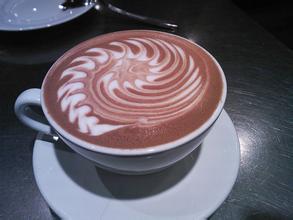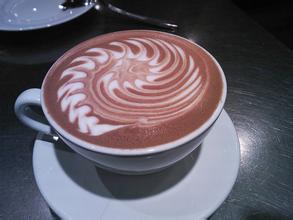Common Flavor and Taste Characteristics--Relationship between Coffee Grain Species and Flavor
Many people blame the astringency of coffee on baristas or bakers, thinking that it is caused by improper extraction or roasting, but in fact there are many reasons for astringency. Let's analyze them one by one!
First of all, the part of raw beans.
The difference of astringency caused by the difference of variety. Robesta beans tend to be more astringent than Arabica beans, because the chlorogenic acid content of Arabica beans is only 5.5%, while that of Robesta beans is 7%. As a result, the content of "dicaffeoylquinic acid" is higher after baking. This is one of the reasons why some international fast food chains tend to be "bitter and astringent"-the heavy use of cheap Robosta beans.
Of course, quality-conscious coffee shops of course use Arabica beans. Arabica beans also have different astringency due to their different growth environment. High-altitude excellent Arabica beans because of the mature period of full fruit and rich in sugar, brewed coffee is often good flavor and round taste without astringency, while low real estate beans tend to have a thin flavor, astringency will also be more prominent because of the overall taste.
No matter what kind of variety or what kind of production conditions, unripe beans are a major culprit causing astringency.
Like many fruits, immature coffee beans contain more chlorogenic acid, so unripe beans are listed as defective. The higher the grade of coffee beans, the less the number of defective beans. In Xiumen coffee, although the raw beans we got are specialty coffee with very low defect rate, we have to hand-select them again before baking to ensure that the taste is pure.
Astringency is an easy word in seal characters, which is composed of four stops. Stop fingers and feet, four feet opposite each other, top together, indicating that none of the feet move.
The original meaning of astringency is not slippery, which extends to the taste that makes the tongue feel numb and not smooth. It also refers to slow speech, difficulty and unsmoothness, and then refers to the heckling of the words, which makes it impossible to read smoothly.
Astringency also wrote "Yan" in ancient times. Xu Shen explained in Shuowen in the Eastern Han Dynasty: if it is not slippery, it will not slip.
Du Fu also wrote in the poem "diseased tangerine" that "it is a pity that it is small and sour as a pear." The ancients' understanding of "astringent" is the same as it is today.
Astringency exists in many foods, needless to say persimmon and cucumber, many immature fruits are inevitably astringent, so there is the word "green and astringent", and astringency is often found in common drinks such as red wine, tea and coffee.
Scientific analysis, astringent taste is different from sweet and sour, it is not a kind of taste, strictly speaking, it should be called "astringent", it is the rough feeling created by polyphenols in food in the mouth. Polyphenols are found in a variety of fruits as well as tea, red wine, chocolate and coffee. Chlorogenic acid, tannic acid and catechin all belong to polyphenols.

Important Notice :
前街咖啡 FrontStreet Coffee has moved to new addredd:
FrontStreet Coffee Address: 315,Donghua East Road,GuangZhou
Tel:020 38364473
- Prev

Introduction to the Brewing temperature, Flavor and Milling Powder scale of the sour-rich Yega Chuefei Coffee
Coffee bean is not only a kind of plant fruit, but also a kind of crop. The existence of Yejia Xuefei better explains the attribute that coffee is a fruit. The third wave of specialty coffee has been trying to interpret the regional flavor of coffee, as for this question, if you look at the counter-cultural coffee flavor wheel, nearly half of them have a description of the flavor of fruit. There are many others that people can think of at a glance.
- Next

Characteristics of Romanian Coffee Brand Flavor and Taste introduction of fine beans by grinding degree treatment in manor producing area
Romania is divided into 41 counties (equivalent to provinces) and 1 municipality directly under the Central Government (capital Bucharest). Counties (equivalent to provinces) have cities, towns and townships. The names of the counties are as follows: Alba, Allard, Aljesh, Baku, Bihor, Bistrica-Netherwood, Botoshani, Blasov, Bleira, Buzeou, Kalash-Severin, Klerashi, Kluge
Related
- Detailed explanation of Jadeite planting Land in Panamanian Jadeite Manor introduction to the grading system of Jadeite competitive bidding, Red bid, Green bid and Rose Summer
- Story of Coffee planting in Brenka region of Costa Rica Stonehenge Manor anaerobic heavy honey treatment of flavor mouth
- What's on the barrel of Blue Mountain Coffee beans?
- Can American coffee also pull flowers? How to use hot American style to pull out a good-looking pattern?
- Can you make a cold extract with coffee beans? What is the right proportion for cold-extracted coffee formula?
- Indonesian PWN Gold Mandrine Coffee Origin Features Flavor How to Chong? Mandolin coffee is American.
- A brief introduction to the flavor characteristics of Brazilian yellow bourbon coffee beans
- What is the effect of different water quality on the flavor of cold-extracted coffee? What kind of water is best for brewing coffee?
- Why do you think of Rose Summer whenever you mention Panamanian coffee?
- Introduction to the characteristics of authentic blue mountain coffee bean producing areas? What is the CIB Coffee Authority in Jamaica?

